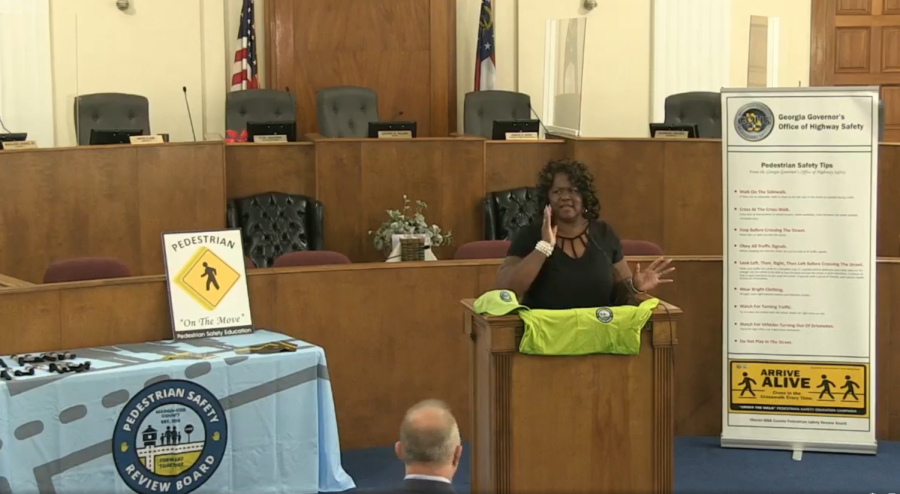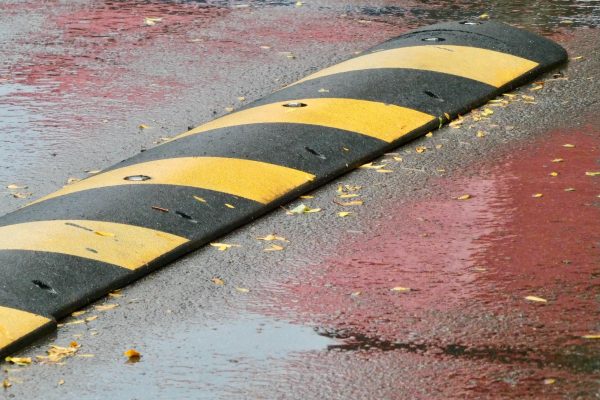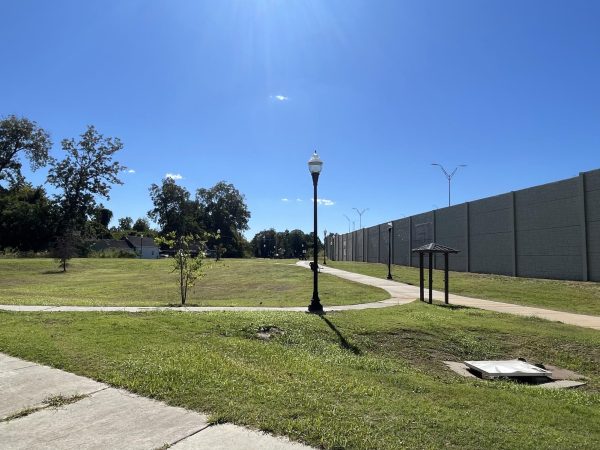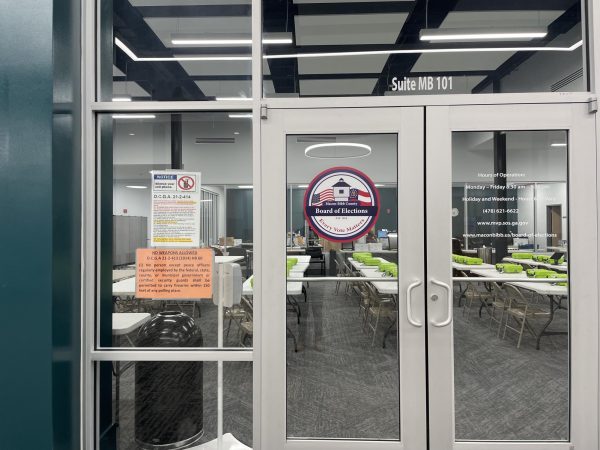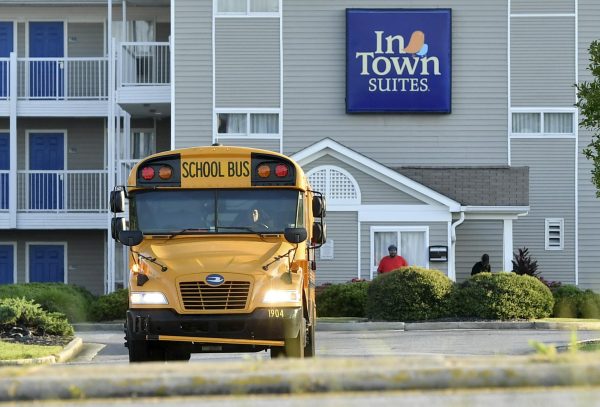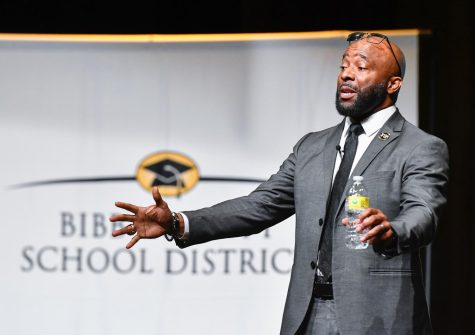How safe is it to walk in your neighborhood? Free training teaches how to identify, document hazards.
Macon-Bibb County Commissioner Elaine Lucas, who spearheaded the creation of the Pedestrian Safety Review Board in 2015, speaks at a news conference on Thursday, June 9, 2022.
The Macon-Bibb County Pedestrian Safety Review Board is set to offer a public training session to teach locals how to identify safety concerns in their own neighborhoods through group walking audits.
The free training is set to take place via Zoom video conference at noon June 16, board member Charise Stephens said at a news conference Thursday morning.
“This is a call to action,” Stephens said. “We need you, the community, to help reduce the number of pedestrian accidents and fatalities in our community, and one way is helping us with our walking audits … It’s an assessment of the pedestrian safety, accessibility and comfort of a particular area or a neighborhood. The great news is anybody can do a walking audit.”
The board is seeking locals of all backgrounds, ages and mobilities to participate and help document specific issues that make an area less safe for pedestrians.
“We want you to experience it differently and that data will help us come up with solutions,” Stephens said. “We can’t do this alone. We need your help.”
The walking audits have been a long time coming.
They’ve been discussed at monthly meetings since November. Two have been completed, one by the Vineville Neighborhood Association and another in Pleasant Hill.
In November, the board voted to incentivize locals to volunteer to lead the audits by offering a $50 gift card and a free lunch to individuals who turn in completed forms for their neighborhood group’s walking audit. Money for the gift cards would have come from a grant the Macon-Bibb County Board of Health awarded to the board.
The board posted a form for walking audits on its website in December.
In January, Stephens said all walking audits would be completed by April.
However, by the March 15 meeting, no new walking audits had been conducted.
“We have talked about it for the last couple of meetings and we really need to get these walking audits done,” Stephens said at the March meeting. “So any suggestions or what we can do that would be great.”
In response to Stephens, David Gowan, director of risk management for Bibb Schools, offered to connect Stephens with the school district’s family engagement coordinator who he said might be able to help identify folks who are interested.
Board member Elaine Lucas said in the meeting she wondered if people were hesitant to participate in the walking audits because of safety concerns such as aggressive dogs in neighborhoods, COVID-19 and the physical exertion of walking.
“I know that there are – in the historic areas – golf carts are allowed,” Lucas said. I’m just thinking of a way that we can talk away the walking, the dogs, so people can avoid getting bitten and things like that. … I’m just thinking [about] what would make it easier for us to get it done.”
Stephens proposed board members could start by conducting walking audits in their own neighborhoods.
“I think that will help us get a jumpstart because we have nothing,” Stephens said, referring to data on where safety improvements are needed.
In April and May, the board discussed various other options that included having board members do an audit and hiring temporary workers to do them. However, at the May meeting the walking audits had still not been completed and no one had been hired to do them.
Days after the meeting, The Macon Newsroom and Georgia Public Broadcasting published a story about how some of the most deadly roads in the county are under the control of the Georgia Department of Transportation.
Shortly thereafter, The Macon Newsroom published a second article noting the board has not been reviewing fatalities or keeping track of the number of pedestrian deaths as outlined in the 2015 ordinance that created the board.
The article also noted the board was deemed a “high risk grantee” by the Georgia Governor’s Office of Highway Safety based on how it spent money from previous grants, its plans for future spending and the successes or failures of its past projects. The board spent most of the grant money it received from GOHS since 2018 on 13,557 of the battery-powered silicone bands.
At the news conference Thursday, Lucas said the board’s accomplishments have been touted at local, state and national levels “and that is an accomplishment in itself.”
“This group has worked tirelessly on behalf of pedestrian safety and it just really tore us apart to see someone to talk with a number of us and then come out with a negative article that made it seem like we weren’t doing anything at all,” she said. “Tears and, you know, I cry when I’m mad and sad and I was mad because I know the work these volunteers put in.”
Mayor Lester Miller defended the board’s past purchases, which include tens of thousands for shirts, hats, shoe laces and other promotional items.
The mayor said, “Would you rather them not do anything?”
The mayor touted that $400,000 had been earmarked “for pedestrian safety,” up from $100,000 in the last budget. However, the money will go to the engineering department and not the board. The mayor said the board will make recommendations about how the engineering department will spend money to improve safety. He said it is also possible the county will use the money to hire a full-time traffic safety engineer to be an advocate for the county to get GDOT to fix some of Bibb’s deadliest roads.
To participate in the training, join the Zoom meeting June 16 at noon using this link: https://us06web.zoom.us/j/89143266548?pwd=dDFUZHZKQnpjakdOcTZNNDY3MXByQT09
To contact Civic Journalism Fellow Laura Corley, call 478-301-5777 or email her at [email protected].



